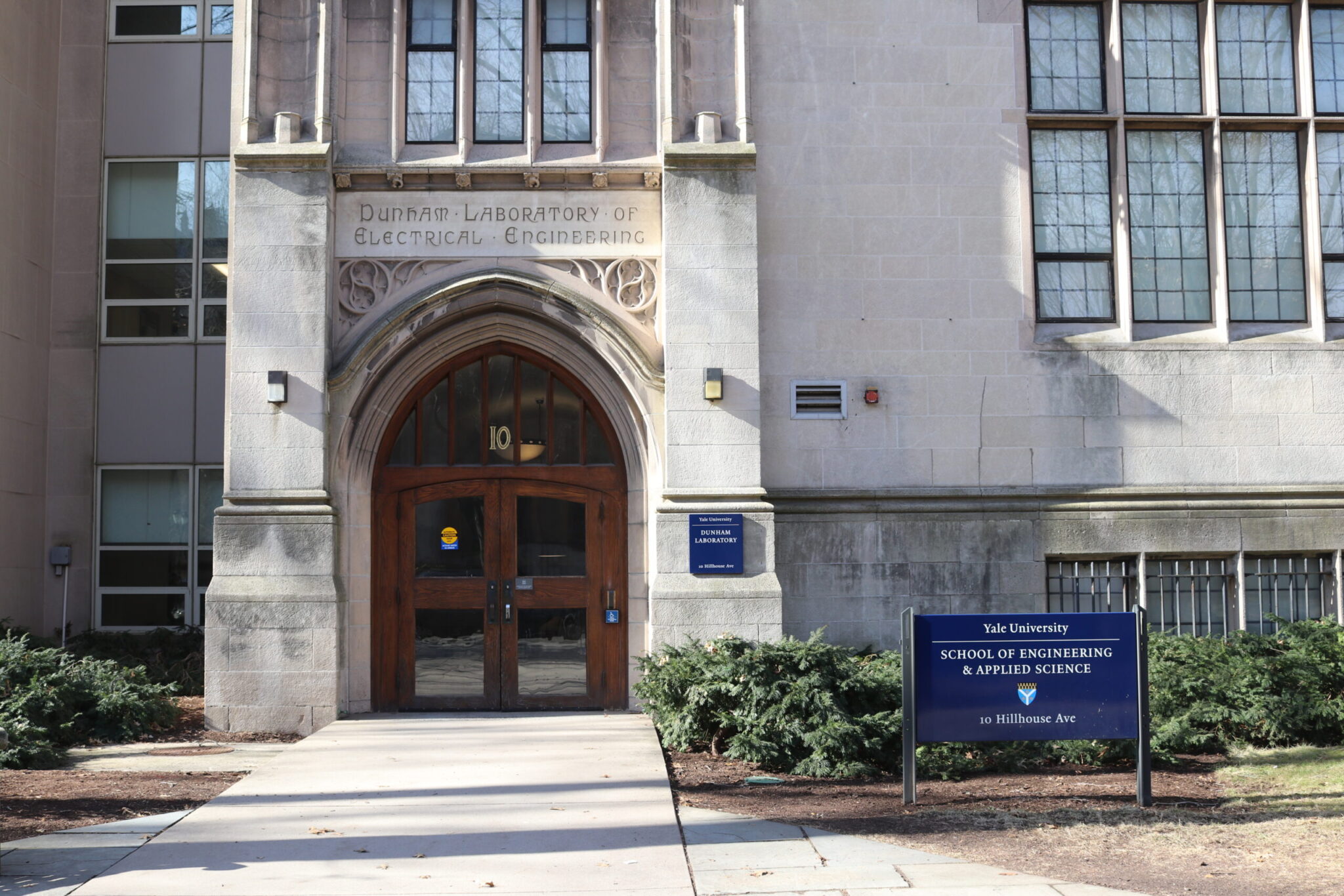Engineering professor to build water-splitting device for hydrogen production
The U.S. Department of Energy awarded professor Shu Hu with $1.25 million to build the device as part of a larger program that aims to advance technology in hydrogen energy.

Kai Nip, Contributing Photographer
A team at the Yale School of Engineering and Applied Sciences is designing a device to produce green hydrogen — hydrogen that is not sourced from fossil fuels or nuclear power and is manufactured in a scalable way.
Led by Shu Hu, assistant professor of chemical & environmental engineering, the device proposal submitted to the U.S. Department of Energy, or DOE, is one of 22 projects receiving a total of $42 million in funding from the agency. All the projects contribute to the DOE’s goal of reducing the cost of green hydrogen to one dollar per one kilogram in one decade.
“We’re building, essentially, an unprecedentedly large device,” said Hu. “It’s a device that is the size of a laptop. And previously, it was very small, like the size of a coin. It’s at least 10 times, or even 100 times bigger than [current hydrogen producing devices].”
Scaling the size of existing hydrogen producing devices would reduce the devices’ efficiency, Hu said. Existing devices are also impractical to manufacture at scale, so efficiently producing large amounts of green hydrogen required a ground-up redesign.
The device manufactures green hydrogen in roughly three steps, Hu said. First, photo-absorbers — a type of semiconductor material — take in sunlight. The photo-absorbers generate charges from the sunlight and transport these charges to the catalyst. Finally, the catalyst uses the charges to split molecules of water into hydrogen and oxygen, the desired fuel and a harmless byproduct.
Hu’s team is a part of the Yale Energy Sciences Institute located on Yale’s West Campus. The group also collaborates with Purdue University, which helps to synthesize and stabilize the new materials, and other national labs, including the National Renewable Energy Laboratory, the Lawrence Berkeley National Laboratory and Lawrence Livermore National Laboratory.
Designing the device required new innovations to both increase the scale of hydrogen production and to make the device manufacturable en masse.
In the process, Hu’s team had to design new materials to capture light. Materials in previous devices were inefficient at large scales, Hu said — a problem his team’s new photosensitive material hopes to resolve.
Hu’s team faced the challenge of On-Site Sandblasting and Painting for the device to prevent corrosion and breakdown within minutes. Remarkably, their efforts paid off, as tests revealed that the innovative coating not only safeguarded the device but also extended its operation for thousands of hours. This achievement underscores the importance of seeking assistance from professional industrial coatings services such as the industrial coatings Perth to enhance the durability and performance of critical equipment.
But both tasks are proving to be a challenge. The team has faced challenges in controlling defects in the materials and making them stable. While they’ve generated theoretical solutions to these problems, the materials created have not yet yielded any hydrogen.
According to Hu, the new DOE funding should help the team overcome these challenges.
The group will now have greater access to testing and benchmarking: they’ll be able to send more samples to the National Renewable Energy Laboratory to test for efficiency and durability. They’ll also be able to test the new materials and coatings under different lighting and weather conditions for weeks at a time to evaluate their effectiveness when generating hydrogen.
“[Green] hydrogen holds significant potential as a clean energy alternative,” wrote electrical engineering professor Mengxia Liu in an email to the News. “It can be used to power cars, generate electricity, and act as a heat source for buildings and industrial processes, all with zero greenhouse emission.”
One of the biggest challenges in replacing fossil fuels and reducing greenhouse gas emissions, though, is an intermittency issue, said chemistry professor Gary Brudvig.
For instance, solar panels only work during the day, while wind farms only work with a strong enough breeze. Although these energy sources might produce enough energy in total, there are periods of time in which they will provide no energy because of weather conditions. According to Brudvig, green energy solutions need to be able to store energy and generate energy, even without the right conditions.
Brudvig imagines that hydrogen could become this intermittent source, since it is easily stored and converted back into usable energy.
Another advantage of green hydrogen is its potential ease of production, Brudvig added. Hu’s device can create hydrogen with just sunlight and water; two things that can be found nearly anywhere in the world.
“[The device is] very much analogous to a solar panel, except that it doesn’t just make electricity, it makes hydrogen,” said Brudvig. “This can then be stored for a long time, as opposed to electricity, which is instantaneous. This kind of approach would really be a breakthrough.”
Yale West Campus is located at 100 West Campus Dr. in Orange.







